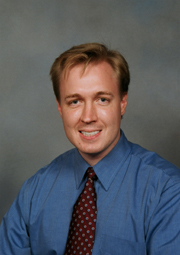Tomographic Analysis of Outer Hair Cell Structure
William Triffo, Rice University

In the mammalian cochlea, the outer hair cell (OHC) is capable of generating axial deformations in response to variations in transmembrane potential. Our understanding of electromechanical transduction in the OHC depends on precise knowledge of intracellular structure, and efforts to model OHC physiology are likewise limited to the fidelity of known intracellular geometry. The cortex of the OHC, referred to as the lateral wall, can be viewed as a trilaminate composite made up of (1) the plasma membrane, (2) a network of actin and spectrin termed the cortical lattice, and (3) lamellar stacks known as the subsurface cisternae (SSC).
Previous studies of the cortical lattice using conventional TEM and AFM techniques relied on protocols that removed the lattice from its native environment. Moreover, depending on the exact fixation protocols, conflicting depictions of SSC ultrastructure have been reported. We have therefore tested a variety of sample preparation methods, including iso-osmotic fixation protocols as well as high-pressure freezing (HPF) and freeze-substitution (FS). Using cochlear samples from mouse, we have employed Electron Microscope Tomography (ET) to study the cortical lattice and its structural relationship to the plasma membrane, resolving the pillar proteins known to span the extracisternal space between the plasma membrane and cortical lattice. ET utilizes a series of TEM projections from a tilted sample to reconstruct a volume density map, allowing us to visualize macromolecular assemblies in their native cellular context. We are also in the position to address whether the SSC is continuous or fenestrated in vivo, and whether the fenestration commonly observed represents a fixation artifact. We discuss the choice of reconstruction and post-processing algorithms, and also comment on our progress in the visualization and analysis of rootlet architecture at the junction of the stereocilia bundle and apical region of the cell.
Abstract Author(s): William J. Triffo (1,3), Kent L. McDonald (2), Manfred Auer (1), and Robert M. Raphael (3)<br /><br />(1) Lawrence Berkeley National Laboratory<br />(2) University of California at Berkeley, Berkeley, CA<br />(3) Rice University, Houston, TX


